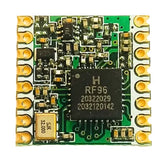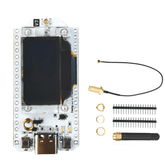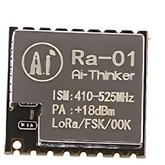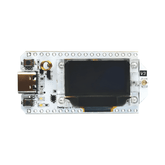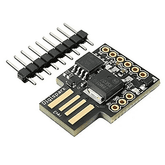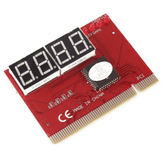What is Lora technology
Introduction to LoRa
LoRa, short for Long Range, is a wireless communication technology designed for low-power, wide-area networks (LPWANs). Developed by Semtech, LoRa enables long-range transmission of small data packets with minimal power consumption, making it ideal for Internet of Things (IoT) applications.
What is LoRa?
LoRa utilizes a proprietary modulation technique called Chirp Spread Spectrum (CSS) to achieve its long-range capabilities. Unlike traditional wireless technologies such as Wi-Fi or Bluetooth, which prioritize high data rates over distance, LoRa focuses on extending the range while conserving power.

In the realm of IoT, devices often need to communicate wirelessly over long distances while operating on battery power. Traditional cellular networks, while capable of long-range communication, consume significant energy, resulting in frequent battery replacements or recharges. LoRa addresses this challenge by providing a low-power alternative for IoT connectivity.
Differentiating LoRa and LoRaWAN
While commonly used interchangeably, it's essential to distinguish between LoRa and LoRaWAN. LoRa refers specifically to the physical layer technology developed by Semtech, whereas LoRaWAN encompasses the network protocol and system architecture built on top of LoRa.
LoRa operates at the physical layer, employing CSS modulation to enable long-range communication. It defines how data is transmitted wirelessly between devices, utilizing specific frequency bands in the unlicensed Industrial, Scientific, and Medical (ISM) radio bands.
On the other hand, LoRaWAN defines the communication protocol and system architecture for managing communication between LoRa devices and the network infrastructure. It governs aspects such as data rate, security, and network architecture, providing a standardized framework for deploying LoRa-based IoT solutions.

Advantages of LoRa for IoT Applications
LoRa offers several key advantages that make it well-suited for a wide range of IoT applications:
- Long Range: LoRa technology enables communication over distances of several kilometers, surpassing traditional wireless technologies.
- Low Power Consumption: By optimizing transmission parameters and utilizing efficient modulation techniques, LoRa devices can operate for extended periods on battery power.
- Cost-Effective: LoRa operates in license-free frequency bands, eliminating the need for expensive spectrum licenses and reducing deployment costs.
- Scalability: LoRaWAN networks can support thousands of devices, making it suitable for large-scale IoT deployments in smart cities, industrial settings, and agriculture.
The Chirp Spread Spectrum Modulation
At the heart of LoRa technology lies Chirp Spread Spectrum (CSS) modulation, a unique modulation technique that enables long-range communication while maintaining low power consumption.
Unlike traditional modulation schemes that rely on fixed frequencies, CSS modulates the signal by continuously varying the frequency over time, creating a chirp signal. This chirp signal allows LoRa devices to achieve robust communication even in environments with significant interference or obstacles.
Benefits of Chirp Spread Spectrum
The use of CSS modulation offers several advantages:
- Resilience to Interference: CSS modulation provides inherent resistance to noise and interference, ensuring reliable communication in challenging environments.
- Low Power Consumption: By utilizing efficient signal processing techniques, LoRa devices can maintain communication over long distances with minimal energy consumption.
- Flexibility: The flexible nature of CSS modulation allows LoRa networks to adapt to varying environmental conditions, ensuring consistent performance across different deployment scenarios.
LoRa technology, powered by CSS modulation, offers a compelling solution for IoT applications requiring long-range, low-power wireless connectivity. Its unique combination of range, power efficiency, and scalability positions it as a leading choice for a diverse range of IoT deployments.
Technical Overview of LoRa and LoRaWAN
LoRaWAN, the communication protocol built on top of LoRa technology, consists of several key components that facilitate reliable and efficient data transmission in IoT networks.
- End Devices - At the edge of the network are the end devices, also known as nodes or sensors. These devices integrate LoRa transceivers along with sensors for capturing environmental data or monitoring physical parameters. End devices play a crucial role in collecting and transmitting data to the network infrastructure.
- Gateways - LoRa gateways serve as the intermediary between end devices and the network server. These gateways receive data packets from nearby nodes and forward them to the network server via standard backhaul technologies such as Ethernet or cellular connectivity. Gateways ensure broad coverage and efficient communication within the LoRaWAN network.
- Network Server - The network server acts as the central coordinator for managing communication within the LoRaWAN network. It receives data packets from gateways, performs network management functions, and routes data to the appropriate application servers based on predefined rules and policies. The network server plays a vital role in ensuring the integrity and security of data transmission in LoRaWAN deployments.
- Application Server - At the application layer, application servers receive and process data from the network server, translating raw sensor data into actionable insights or triggering specific actions based on predefined logic. Application servers enable developers to build custom applications and services on top of the LoRaWAN infrastructure, unlocking the full potential of IoT solutions.
Frequency Bands and Licensing Requirements
LoRa operates in the unlicensed Industrial, Scientific, and Medical (ISM) radio bands, offering flexibility and accessibility for IoT deployments worldwide. However, specific frequency bands and regulatory requirements may vary depending on geographic location.
ISM Bands for LoRa
The most commonly used ISM bands for LoRa deployments include:
- 868 MHz (Europe)
- 915 MHz (North America)
- 923 MHz (Asia-Pacific)
These frequency bands provide ample coverage and regulatory approval for LoRa-based applications, enabling seamless connectivity across different regions.
Licensing Considerations
Unlike cellular technologies that require spectrum licenses for operation, LoRa operates in license-free bands, simplifying deployment and reducing operational costs. However, it's essential for organizations to comply with local regulations and ensure adherence to frequency allocation guidelines to avoid interference and regulatory issues.
Comparison with Other Wireless Technologies
In the landscape of wireless connectivity, LoRa stands out as a compelling option for IoT applications. Let's explore how LoRa compares to other wireless technologies in key areas:
- Range - LoRa offers exceptional range capabilities, surpassing traditional wireless technologies such as Wi-Fi and Bluetooth. With transmission distances of several kilometers in urban environments and even greater coverage in rural areas, LoRa enables long-range communication without the need for additional infrastructure.
- Power Consumption - One of LoRa's defining features is its low power consumption, making it well-suited for battery-operated devices and applications requiring extended battery life. Compared to cellular technologies like 4G and 5G, which consume more power for high-speed data transmission, LoRa excels in energy efficiency, enabling long-term deployment in remote or inaccessible locations.
- Scalability - LoRaWAN networks can support thousands of devices per gateway, making them highly scalable for large-scale IoT deployments. In contrast, traditional wireless protocols may face limitations in terms of network capacity and scalability, particularly in dense urban environments or industrial settings with high device density.
- Cost - Cost-effectiveness is another advantage of LoRa technology, as it operates in unlicensed frequency bands and requires minimal infrastructure investment. Compared to cellular networks that involve ongoing subscription fees and infrastructure maintenance costs, LoRa offers a more economical solution for IoT connectivity, especially in applications with a large number of distributed sensors or devices.
Key Features and Capabilities of LoRaWAN
Transmission Range vs. Bit Rate Trade-off
When considering LoRaWAN deployments, understanding the trade-off between transmission range and bit rate is crucial for optimizing performance based on specific application requirements.
- Long Transmission Range - One of the standout features of LoRaWAN is its exceptional transmission range. By utilizing innovative modulation techniques and operating in sub-GHz frequency bands, LoRaWAN networks can achieve communication distances of several kilometers in urban environments and even greater ranges in rural areas.
- Bit Rate Considerations - While LoRaWAN offers impressive range capabilities, it's essential to acknowledge the impact on data transmission rates. Unlike high-speed cellular networks, LoRaWAN operates at lower bit rates, typically ranging from tens to hundreds of kilobits per second. This lower data rate ensures reliable communication over long distances while minimizing power consumption, making it ideal for battery-operated devices and applications requiring long-term deployment.
- Optimizing Performance - To strike the right balance between transmission range and bit rate, LoRaWAN deployments often involve careful optimization of network parameters such as spreading factor, bandwidth, and coding rate. By adjusting these parameters based on environmental factors and application requirements, organizations can maximize network coverage while maintaining acceptable data rates for their specific use cases.
LoRa Nodes and Gateways
LoRaWAN networks consist of two primary components: nodes and gateways. Understanding the role and capabilities of these elements is essential for designing and deploying robust IoT solutions.

- LoRa Nodes - LoRa nodes, also known as end devices, form the foundation of LoRaWAN deployments. These compact, battery-operated devices integrate LoRa transceivers along with sensors for capturing environmental data or monitoring physical parameters. LoRa nodes transmit data packets at predefined intervals or in response to specific events, forming the backbone of IoT sensor networks.
- LoRa Gateways - LoRa gateways serve as the bridge between end devices and the network infrastructure. Positioned strategically within the coverage area, gateways receive data packets from nearby nodes and forward them to the network server via standard backhaul technologies such as Ethernet or cellular connectivity. Gateways play a crucial role in extending network coverage and ensuring reliable communication within the LoRaWAN ecosystem.
Star Network Topology in LoRaWAN
LoRaWAN networks typically adopt a star network topology, characterized by a centralized network architecture with nodes communicating directly with gateways.
- Centralized Communication - In a star network topology, LoRa nodes transmit data packets to nearby gateways within their coverage range. These gateways serve as the central access points for collecting and relaying data to the network server. The centralized nature of communication simplifies network management and enables efficient routing of data within the LoRaWAN infrastructure.
- Scalability and Flexibility - The star network topology offers scalability and flexibility, allowing organizations to deploy thousands of nodes within a single network. With each node communicating directly with gateways, LoRaWAN networks can accommodate diverse use cases and applications while maintaining robust connectivity and data integrity.

Bidirectional Communication and Actuation
One of the key capabilities of LoRaWAN is its support for bidirectional communication, enabling not only data sensing and collection but also remote actuation and control of devices.
- Bidirectional Communication - LoRaWAN networks facilitate bidirectional communication between end devices and the network server, allowing devices to send data to the server and receive commands or acknowledgments in return. This bidirectional communication enables real-time interaction and responsiveness, enhancing the functionality and usability of IoT solutions.
- Remote Actuation - In addition to data transmission, LoRaWAN supports remote actuation, allowing devices to execute specific actions or control external equipment based on predefined commands or triggers. Examples of remote actuation include turning on/off lights, adjusting environmental parameters, or activating security systems, expanding the scope of IoT applications across various industries.
The key features and capabilities of LoRaWAN, including its transmission range, network topology, and support for bidirectional communication, lay the foundation for scalable and reliable IoT deployments across diverse use cases and industries. Understanding these elements is essential for leveraging the full potential of LoRaWAN technology in building connected and intelligent ecosystems.
Applications and Use Cases of LoRa Technology
Smart Agriculture
- LoRa technology is revolutionizing the agricultural sector by enabling smart farming practices that improve efficiency, productivity, and sustainability.
- Remote Monitoring: LoRa-enabled sensors can monitor various agricultural parameters such as soil moisture, temperature, humidity, and crop health in real time, allowing farmers to make data-driven decisions.
- Precision Irrigation: With LoRa-based irrigation systems, farmers can precisely control water usage based on soil moisture levels and weather forecasts, minimizing water wastage and optimizing crop yield.
- Livestock Management: LoRa sensors facilitate remote monitoring of livestock health and behavior, enabling early detection of diseases, tracking animal movements, and optimizing feed management.
Use Cases in Smart Agriculture
- Crop Monitoring: LoRa sensors deployed across farmland collect data on soil conditions, weather patterns, and crop growth, providing insights for precision agriculture techniques such as variable rate fertilization and seeding.
- Environmental Monitoring: LoRa networks monitor environmental factors such as temperature, humidity, and air quality, helping farmers mitigate risks from adverse weather conditions and climate change.
- Livestock Tracking: LoRa-enabled GPS trackers attached to livestock enable real-time tracking of animal movements, allowing farmers to optimize grazing patterns, prevent theft, and locate lost animals.
Industrial IoT (IIoT) Applications
LoRa technology is driving innovation in industrial IoT applications, empowering organizations to optimize processes, enhance safety, and reduce operational costs.
- Asset Tracking: LoRa-based asset tracking systems enable real-time monitoring of equipment, tools, and inventory across industrial facilities, improving asset utilization and preventing loss or theft.
- Predictive Maintenance: LoRa sensors collect data on machine health and performance, allowing predictive maintenance algorithms to identify potential failures before they occur, minimizing downtime and maximizing productivity.
- Environmental Monitoring: LoRa networks monitor environmental conditions such as temperature, humidity, and air quality in industrial settings, ensuring compliance with regulatory standards and creating safer working environments for employees.
Use Cases in Industrial IoT
- Supply Chain Optimization: LoRa-enabled sensors track the movement of goods and materials throughout the supply chain, providing visibility into inventory levels, delivery status, and transportation conditions, optimizing logistics operations.
- Energy Management: LoRa sensors monitor energy consumption and equipment efficiency in industrial facilities, enabling organizations to identify energy-saving opportunities, reduce costs, and minimize environmental impact.
- Safety and Security: LoRa-based surveillance systems monitor critical infrastructure, detect unauthorized access, and alert security personnel to potential safety hazards or security breaches in real time.

Smart Cities and Environmental Monitoring
LoRa technology plays a vital role in building smart cities and enabling environmental monitoring solutions that enhance public services, improve quality of life, and promote sustainability.
- Air Quality Monitoring: LoRa sensors measure air pollution levels, including particulate matter, pollutants, and greenhouse gases, enabling cities to implement targeted measures to improve air quality and public health.
- Waste Management: LoRa-enabled waste bins equipped with sensors monitor fill levels and optimize collection routes, reducing operational costs, minimizing environmental impact, and enhancing cleanliness in urban areas.
- Smart Parking: LoRa sensors detect parking space availability in real time, guiding drivers to vacant spots and reducing traffic congestion, pollution, and fuel consumption associated with circling for parking.
Use Cases in Smart Cities
- Traffic Management: LoRa networks monitor traffic flow, congestion, and vehicle movements, enabling cities to optimize traffic signals, manage road infrastructure, and improve transportation efficiency.
- Water Management: LoRa sensors track water usage, detect leaks, and monitor water quality in urban water systems, enabling cities to conserve resources, prevent water wastage, and ensure safe drinking water for residents.
- Public Safety: LoRa-based surveillance cameras and sensors enhance public safety by monitoring crime, detecting emergencies, and providing real-time alerts to law enforcement agencies and first responders.
Asset Tracking and Supply Chain Management
LoRa technology revolutionizes asset tracking and supply chain management by providing real-time visibility into the location, status, and condition of goods and assets throughout the supply chain.
- Real-time Tracking: LoRa-enabled GPS trackers monitor the movement of goods, vehicles, and containers in transit, providing accurate location data and ensuring timely delivery and fulfillment of orders.
- Inventory Management: LoRa sensors track inventory levels, monitor storage conditions, and manage stock replenishment, optimizing warehouse operations, reducing stockouts, and minimizing inventory holding costs.
- Cold Chain Monitoring: LoRa temperature sensors monitor the temperature and humidity of perishable goods during transportation and storage, ensuring compliance with temperature-sensitive requirements and preserving product quality.
Use Cases in Supply Chain Management
- Fleet Management: LoRa-enabled telematics systems track the location, fuel consumption, and performance of fleet vehicles, enabling fleet managers to optimize routes, improve driver safety, and reduce operating expenses.
- Container Tracking: LoRa-based container tracking solutions monitor the movement and condition of shipping containers across global supply chains, enhancing visibility, security, and efficiency in maritime logistics operations.
- Asset Security: LoRa sensors provide anti-theft and tamper detection capabilities for high-value assets and cargo, enabling organizations to mitigate the risk of theft, loss, and unauthorized access during transit or storage.
Implementing LoRa Solutions
When implementing LoRa solutions, selecting the appropriate hardware for nodes and gateways is crucial to ensure optimal performance and compatibility with your IoT applications.

LoRa Nodes
- Sensor Integration: Choose LoRa nodes that support integration with a wide range of sensors relevant to your specific application requirements, such as temperature, humidity, motion, or gas sensors.
- Battery Life: Opt for nodes equipped with low-power microcontrollers and efficient power management features to maximize battery life, enabling long-term deployment without frequent battery replacements.
- Communication Range: Consider the transmission range of LoRa nodes based on your deployment environment and coverage requirements, ensuring adequate signal strength and reliability over the desired distance.
LoRa Gateways
- Coverage Area: Select LoRa gateways with sufficient coverage range to ensure seamless communication with LoRa nodes deployed across your target area, taking into account factors such as terrain, obstacles, and interference.
- Network Capacity: Choose gateways capable of handling the expected volume of data traffic from LoRa nodes within your IoT network, considering factors such as data rate, packet size, and concurrency.
- Connectivity Options: Look for gateways with versatile connectivity options, including Ethernet, Wi-Fi, and cellular backhaul, to ensure flexible deployment and easy integration with existing network infrastructure.
Developing LoRaWAN-Compatible Applications
Developing LoRaWAN-compatible applications requires adherence to the LoRaWAN protocol specifications and best practices to ensure interoperability, security, and reliability across diverse LoRa networks.
Protocol Compliance
- LoRaWAN Stack: Implement the LoRaWAN protocol stack according to the latest specifications defined by the LoRa Alliance, ensuring compatibility with LoRaWAN gateways and network servers.
- Class Support: Support all classes of LoRaWAN devices (Class A, B, and C) to accommodate diverse IoT use cases and communication requirements, such as bi-directional communication and energy-efficient operation.
- ADR Implementation: Implement Adaptive Data Rate (ADR) algorithms to optimize communication parameters dynamically based on network conditions, maximizing network capacity and battery life for LoRa devices.
Security Considerations
- End-to-End Encryption: Implement robust encryption mechanisms, such as AES-128 encryption and message integrity checks, to secure communication between LoRa nodes and network servers, protecting data from unauthorized access and tampering.
- Key Management: Establish secure key management practices for LoRa devices, including key generation, distribution, and rotation, to prevent key compromise and ensure long-term security of IoT deployments.
- Device Authentication: Implement mutual authentication mechanisms between LoRa nodes and network servers using secure identifiers and cryptographic keys, preventing unauthorized devices from accessing the network.
Considerations for Power Management and Battery Life
Efficient power management is essential for prolonging the battery life of LoRa devices and ensuring reliable operation in remote or battery-powered IoT deployments.
Low-Power Design
- Sleep Modes: Utilize low-power sleep modes and duty cycling techniques to minimize energy consumption during idle periods, allowing LoRa devices to conserve power while remaining responsive to periodic wake-up events.
- Sensor Sampling: Optimize sensor sampling rates and data transmission intervals based on application requirements and environmental conditions, balancing the need for real-time data with the constraints of power consumption.
- Energy Harvesting: Explore energy harvesting technologies, such as solar panels or kinetic generators, to supplement or recharge batteries in off-grid or outdoor IoT deployments, extending the operational lifespan of LoRa devices.
Battery Selection
- Battery Type: Choose rechargeable or primary battery types (e.g., lithium-ion, alkaline) based on factors such as energy density, lifespan, and operating temperature range, ensuring compatibility with the intended deployment environment and usage profile.
- Capacity Planning: Estimate the energy requirements of LoRa devices over their expected lifespan and select batteries with sufficient capacity to meet operational needs while minimizing the size, weight, and cost of the overall solution.
- Temperature Management: Consider the impact of temperature extremes on battery performance and lifespan, implementing thermal management measures, such as insulation or ventilation, to mitigate temperature-related degradation and optimize battery longevity.
Integration with Existing IoT Infrastructure
Integrating LoRa solutions with existing IoT infrastructure requires careful planning and coordination to ensure seamless interoperability, data exchange, and scalability across heterogeneous networks and applications.
Interoperability Standards
- IoT Protocols: Support interoperability with industry-standard IoT protocols, such as MQTT, CoAP, or HTTP, to facilitate data exchange and integration with IoT platforms, cloud services, and enterprise systems.
- API Compatibility: Provide well-defined APIs and integration interfaces for LoRa devices and network services, enabling seamless integration with third-party applications, analytics platforms, and automation workflows.
- Legacy System Integration: Implement gateway protocols and data translation layers to bridge the gap between legacy IoT systems and LoRa networks, enabling backward compatibility and gradual migration to LoRa-based solutions.
Scalability and Expansion
- Modular Architecture: Design LoRa solutions with a modular architecture that supports scalable deployment models and incremental expansion of network coverage, capacity, and functionality to accommodate growing IoT requirements and user demands.
- Cloud Integration: Integrate LoRa networks with cloud-based IoT platforms and services to leverage scalable computing resources, data storage, and analytics capabilities, enabling advanced IoT applications and services at scale.
- Edge Computing: Explore edge computing solutions and distributed processing architectures to offload computation and data processing tasks from centralized cloud servers to edge devices or gateways, reducing latency and enhancing scalability for real-time IoT applications.
Conclusion
In this comprehensive exploration of LoRa technology, we have delved into its various aspects, from its fundamental principles to its practical applications and future prospects.
Looking ahead, the future of LoRa technology appears promising, with continuous advancements and innovations poised to expand its reach and impact in the IoT landscape. As we navigate through evolving challenges such as security, scalability, and regulatory compliance, collaboration and standardization efforts will play a vital role in shaping the trajectory of LoRa technology.
With its unique combination of long-range connectivity, low power consumption, and cost-effectiveness, LoRa technology is well-positioned to drive the next wave of IoT innovation, empowering industries, enhancing quality of life, and fostering sustainable development worldwide. As stakeholders across various sectors embrace the potential of LoRa technology, we anticipate a future characterized by interconnectedness, intelligence, and endless possibilities.





